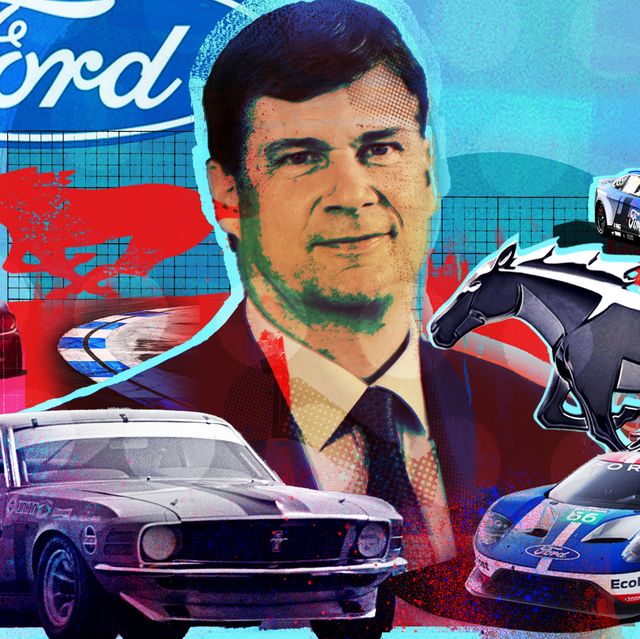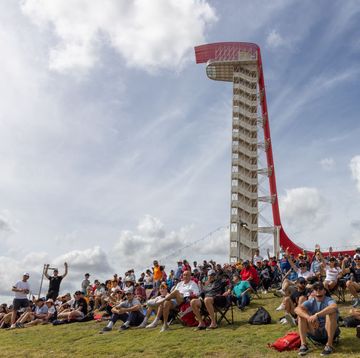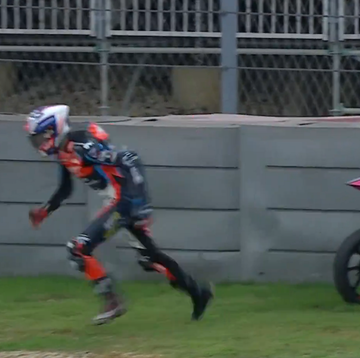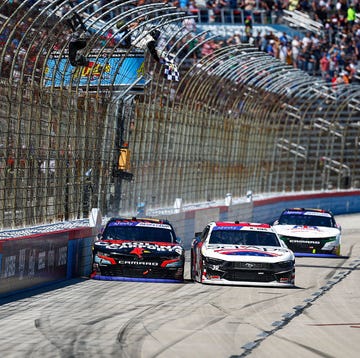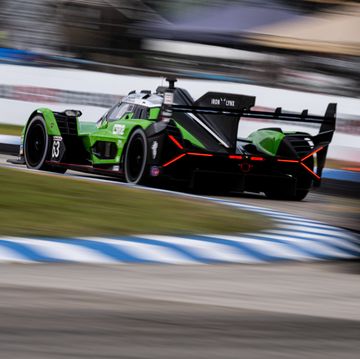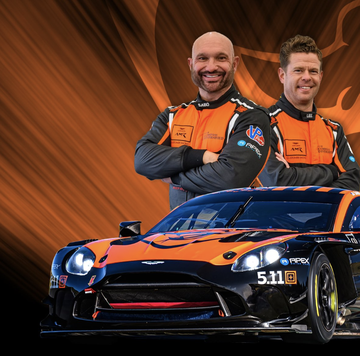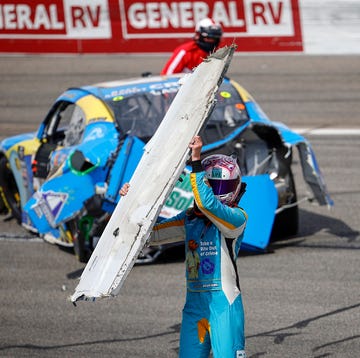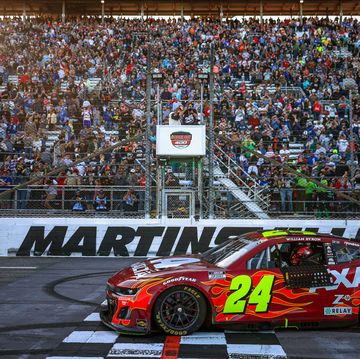With the reveal of the seventh-generation Ford Mustang at the Detroit Auto Show Wednesday, Ford CEO Jim Farley told R&T in an exclusive phone interview that the company is planning a historically ambitious racing program, globally, from the get-go.
“We are going to take a different approach to racing with Mustang,” Farley said. “This is something we have never done before. We want everyone from club racers to professionals to see Mustang as a really incredible choice globally in all series, all around the world.”
Sign up for Grid Notes, Road & Track's new motorsports newsletter.
The company has confirmed plans to produce the new Mustang in racing trim for factory efforts and customer teams, for everything from NASCAR to NHRA Factory X, Australian Supercars, a GT3 car (for IMSA, WEC, and other GT3 series globally), a GT4 car (IMSA, SRO, FIA GT), plus dealership-available racing Mustangs for SCCA, NASA, and spec series. The plan is to turn the world’s racetracks, in just about every form of road racing imaginable, into a showcase for this new car. Ford will take on—in head-to-head competition—everything from Porsche 911s to Lamborghini Huracans, with the Mustang, as never before. There are also plans to return to Le Mans, with a Mustang GT3.
“I’ve worked really closely with Bill [Ford] and Mark Rushbrook, our global racing director, personally on this vision for Mustang,” Farley says. “Because I believe this is the new model for racing for an OEM. A GT car, in every class, selling parts to racers, selling performance parts to the people on the road and the people who track. We don’t have to buy a Super Bowl ad for Mustang because we’re going to be out there on the track, every weekend, all around the world. People will see that we put our money where our mouth is.”
What makes the program work, Farley says, is the flexibility of the model itself. “I’ve been watching Miata and 911, especially what Porsche has done over the years. But they never had NHRA or NASCAR… We can do NHRA, we can do NASCAR, we can go to the Bathurst 1000. People will see Mustang everywhere. You can’t say that with the 911… I can’t wait to see Mustang competing with Ferrari and Porsche and Aston Martin, and all the other brands, globally.”
Farley’s announcement is reminiscent of the day, in 1963, when Henry Ford’s grandson Henry II—“Hank the Deuce,” one of the most influential chief executives of the 20th century—launched an unprecedentedly ambitious new racing program. He told reporters, “We’re going in with both feet.” In the 1960s, Ford’s “Total Performance” program invested heavily in IndyCar, NASCAR, and the GT40 Le Mans program, leading to the now-legendary Ford v Ferrari wars. As Sports Illustrated put it at that time, “However one looks at it, Ford of Dearborn has set the cat among the pigeons. We are on the threshold of possibly the most exciting racing era in history.”
Ford’s Total Performance program in the sixties aimed to market one model above all others, a brand new car that appeared in April 1964 called the Mustang. The first-gen was unveiled at the New York World’s Fair at an event with Henry Ford II, Lee Iacocca, and Walt Disney. Total Performance helped turn the first-gen Mustang in 1964 into the most successful new model launch in all of history at that time. It became an instant pop culture sensation, in America. The idea is to recreate that high-speed marketing program—only now, to do it globally. Unlike in the 1960s, today, the Mustang is sold in about a hundred countries. In the 1960s, Ford’s Total Performance invested in NASCAR, IndyCar, Le Mans prototype racing, and Formula 1 engines. Now, in contrast, the whole effort will be about a single nameplate—Mustang.
In 2015, the company launched a successful sports car racing program with a new GT, the heir of the 1960s GT40 Le Mans winner. That new GT, produced in small numbers and offered to customers as a road car at hundreds of thousands of dollars, was backed by a factory racing program that produced checkered flags at Le Mans and the Rolex 24. The Mustang effort, Farley says, adds critical elements—the chance for privateer teams to buy GT3 and GT4 cars, at a relatively affordable price. In other words, to increase Ford’s presence in racing exponentially.
“The WEC [World Endurance Championship] is going to be a huge effort for us,” Farley says.“A lot of teams want to race a Mustang. We have no shortage of interest because they know when Ford goes racing, we’re going to want to win.”
If any automobile CEO is likely to launch to a historic racing program, it would be Farley, who became CEO at Ford in October 2020. He grew up in this business; his grandfather worked at Ford’s River Rouge plant, decades ago. Farley is also a well-known vintage racer, scoring a podium at Le Mans Classic this summer, placing second in a 1965 Ford GT40.
“As a racer, I know one thing,” he says. “It takes a lot of money to win. I’m quite careful about racing because I have to spend my own money. I’m in my GT40 going nine-tenths, ten-tenths. That’s my hobby. I don’t play golf. I don’t play tennis. I race Cobras, GT40s, my Lola 298, modern Mustangs. I’m careful about racing because I know how much it costs and I know how many companies waste money on racing.”
The new racing initiative, and the car itself, puts a spotlight on the most electrifying business story of our times—the mass conversion of automobile transportation away from internal combustion engines. The seventh-generation Mustang will almost certainly be the last that will be powered exclusively by gasoline. Farley confirmed that all the racing Mustang iterations, from NHRA to IMSA to WEC, will be V-8 powered.
Farley also says that, while Ford is in the process of hammering out the partnerships, driver contracts, and endless details, the racing program will begin as soon as cars arrive at dealerships, next summer. The real measure of success will be seen in showrooms all around the world and also, in results on the track.
Can Mustang win? That remains to be seen. With a program this ambitious and global, there will be a lot of eyes watching.
“We’ve put so much thought behind this,” says Farley, “and it’s a big initiative. It’s going to be awesome.”
A.J. Baime is the author of seven books, including Go Like Hell: Ford, Ferrari, and Their Battle for Speed and Glory at Le Mans, and The Accidental President: Harry S. Truman and the Four Months that Changed the World. An R&T editor-at-large, he has driven cars on racetracks all over the U.S. and Europe, going back to 2007. He is proudly the R&T staff’s slowest track driver.
